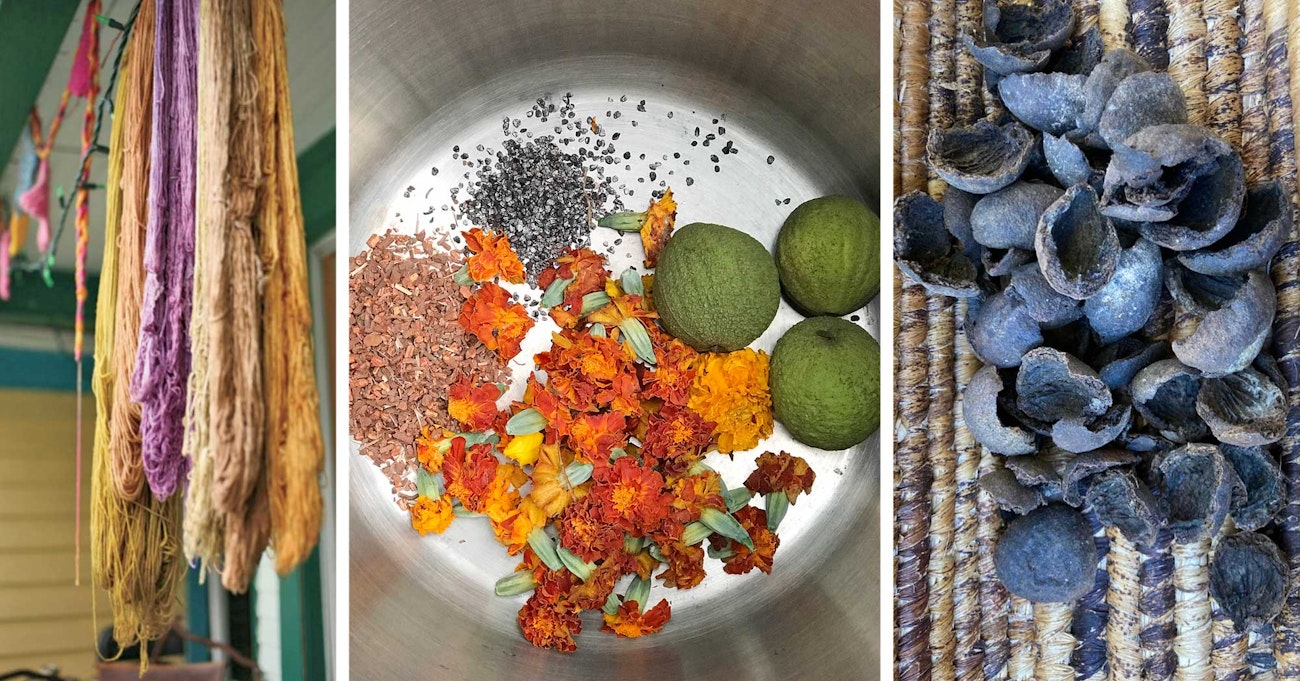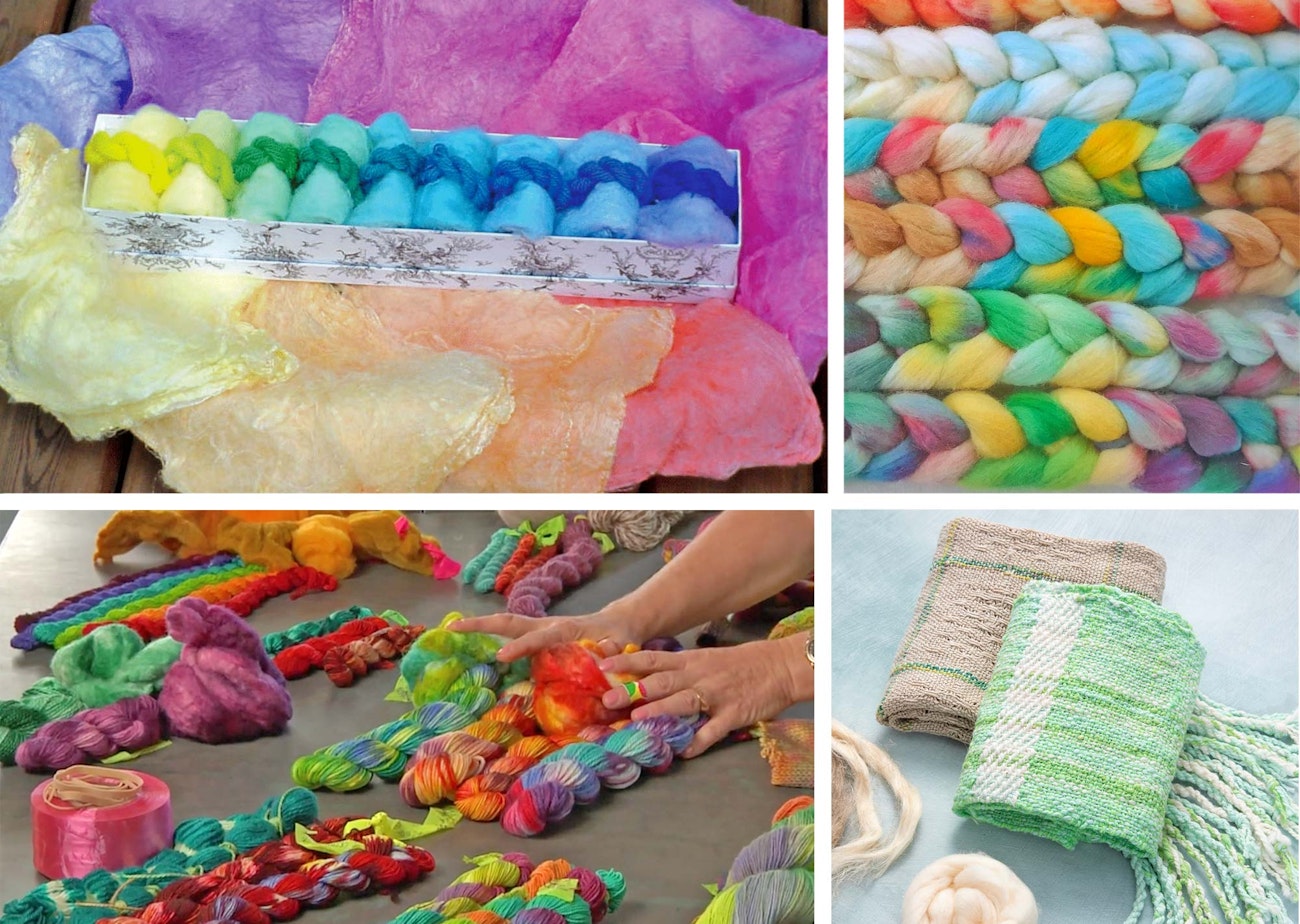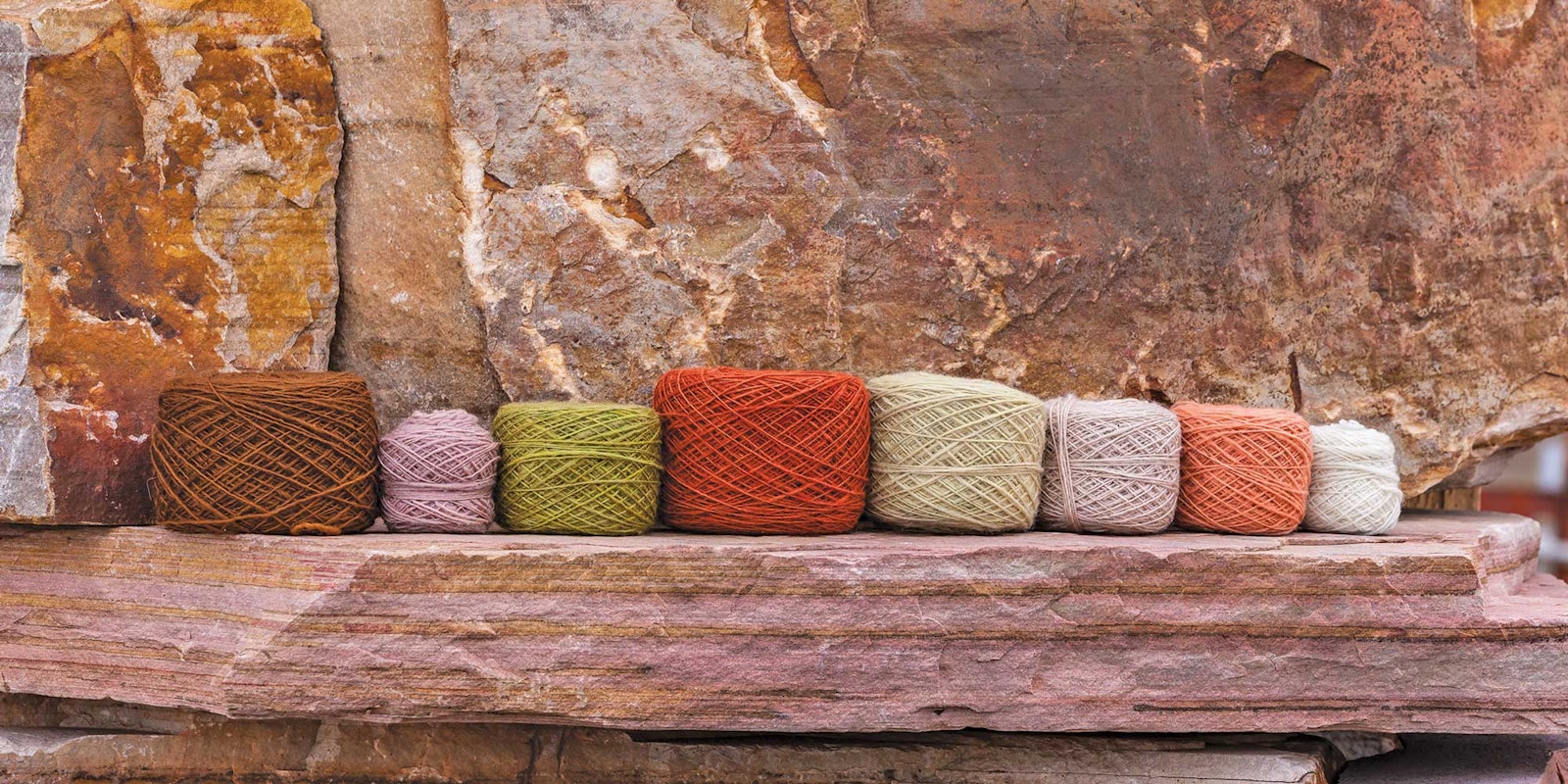If you’re new to dyeing, it might be difficult to determine where to start, but learning how to dye your own yarn and fiber is easier than you might think. Here, we’ve gathered a few of our favorite resources to help you get started. Dyeing is fun to do and a wonderful way to experiment, whether you’re a beginner or a more seasoned spinner. As color expert Deb Menz says, dyeing your own yarn and fiber will yield a unique collection of yarns that aren’t available commercially.
Resources for the Beginner Dyer
Natural Dyes
There are different ways to approach natural dyes. Perhaps you are a forager, seeking color from yard waste, roadside plants, kitchen scraps, and even your spice cabinet. Or maybe you are interested in ancient dyes from around the globe, such as indigo, madder, cochineal, and more. Most dyers do a bit of both, and we have resources to get you started.
 From left: Dip your toe into natural dyeing as these authors have done with solar dyeing, marigolds and other plant material, and black walnut hulls. Photo credits (left to right): Sylvia McFadden, Martha Owen, and Devin Helmen
From left: Dip your toe into natural dyeing as these authors have done with solar dyeing, marigolds and other plant material, and black walnut hulls. Photo credits (left to right): Sylvia McFadden, Martha Owen, and Devin Helmen
Natural Dyeing with Dagmar Klos video download
ADVERTISEMENTOverdyeing with Natural Dyes by Dagmar Klos video download
“Warm Browns from Black Walnuts” by Devin Helmen web article
“Kissed by the Sun: The Art of Solar Dyeing” by Caitlin Ffrench web article
Synthetic Dyes
Synthetic dyes, which include acid dyes for protein fibers and fiber-reactive dyes for cellulose, can create any color you can imagine with some practice. Find tips for immersion dyeing, resist dyeing, solar dyeing, and more using these resources.
 Synthetic dyes can yield vibrant colors on protein and cellulose fibers. Photo credits: (clockwise, from top left) Kim McKenna, Sukrita Mahon, Matt Graves, and Dyeing in the Kitchen with Deb Menz by Long Thread Media
Synthetic dyes can yield vibrant colors on protein and cellulose fibers. Photo credits: (clockwise, from top left) Kim McKenna, Sukrita Mahon, Matt Graves, and Dyeing in the Kitchen with Deb Menz by Long Thread Media
“Acid Dyes: Step By Step with Mary Berry” web article
Dyeing in the Kitchen with Deb Menz online workshop
“Dyeing Silk Hankies: A Canvas for Color Work” by Kim McKenna, Fall 2007 Spin Off
“Solar Dyeing: Cushing’s Direct Dyes for Plant Fibers” by Joan S. Ruane, Spring 2021 Spin Off
“Handpainting Fiber: Exploring Food and Drink Dyes” by Sukrita Mahon web article
These authors cover the safety precautions you need to take to protect yourself and the environment. Dive into the basics of hand-dyeing yarn and fiber and create the colors you crave.
Also, remember that if you are an active subscriber to Spin Off magazine, you have unlimited access to previous issues, including those mentioned here. See our help center for the step-by-step process on how to access them.

